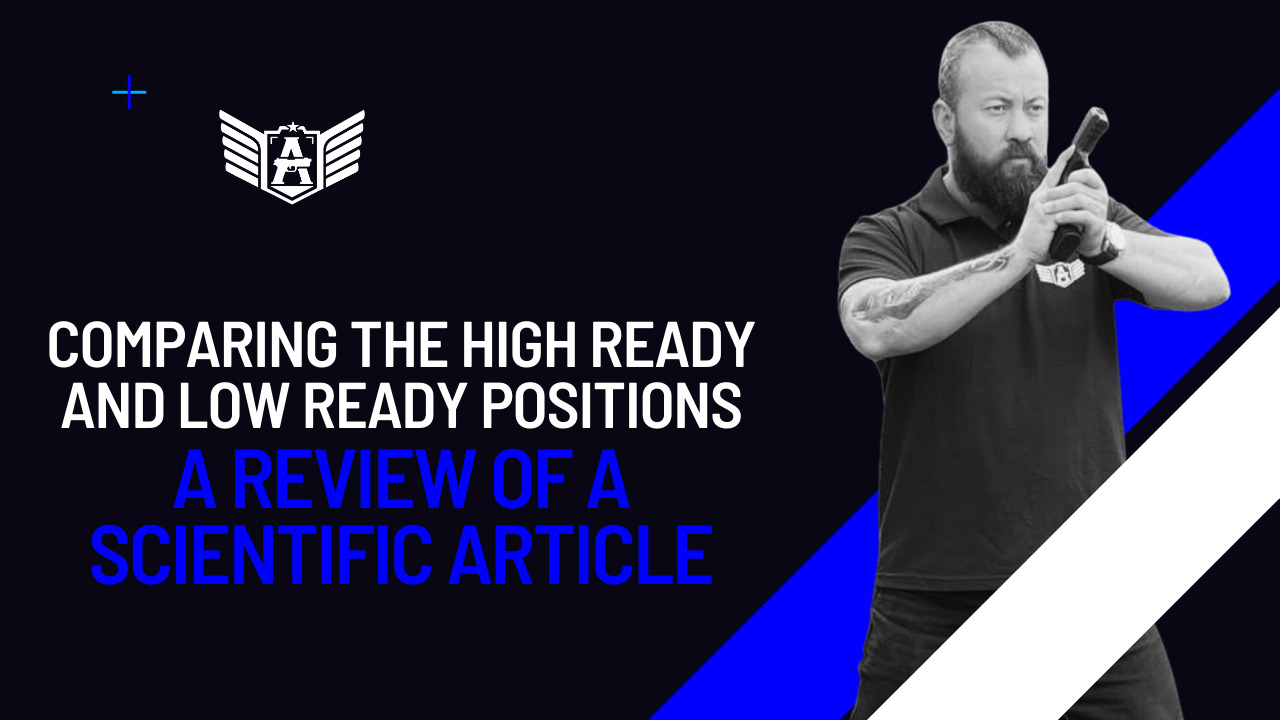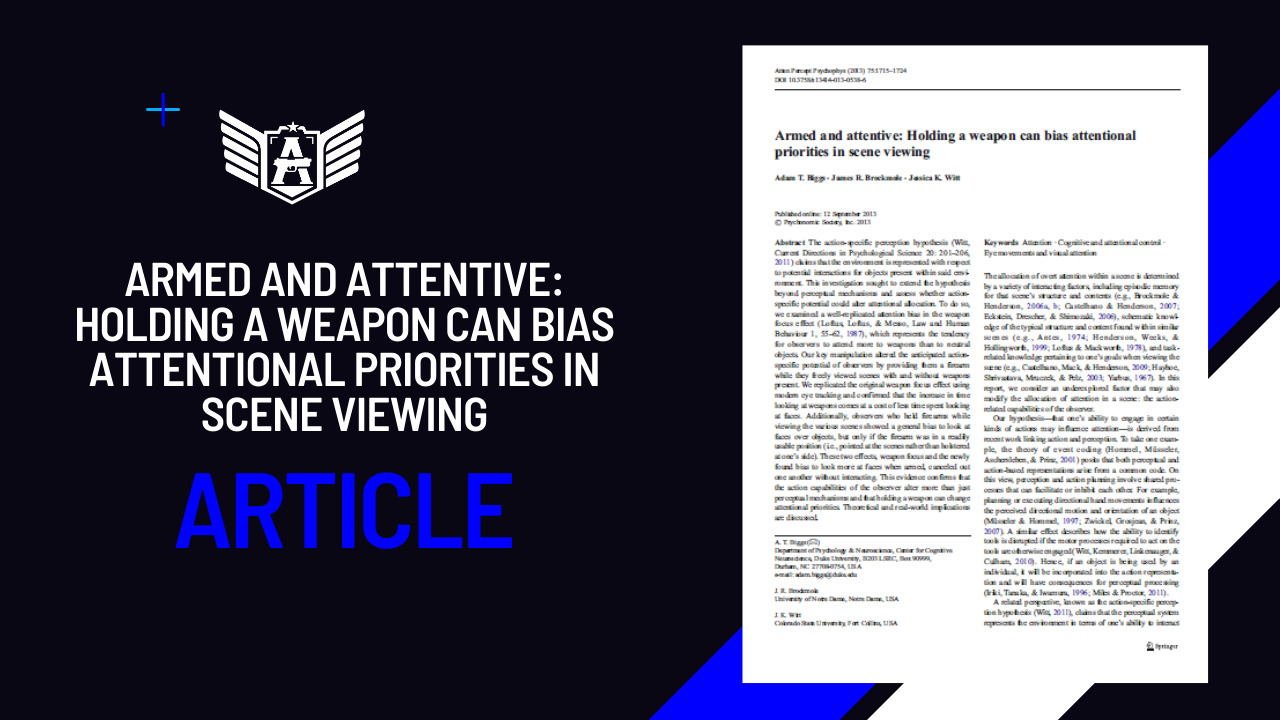Researchers Leandro L. Di Stasi, Evelyn Gianfranchi, Miguel Pérez-García, and Carolina Diaz-Piedra studied how emotional arousal might affect shooting performance among well-trained high-risk operators using auditory stimuli. Their results were published in the International Journal of Industrial Ergonomics in 2020, in an 11-page article titled “The Influence of Unpleasant Emotional Arousal on Military Performance: An Experimental Study Using Auditory Stimuli During a Shooting Task.“
The detrimental impact of unpleasant emotional arousal, such as fear or panic, on performance has long been recognized, particularly in safety-critical environments like battlefield scenarios. Historical narratives and scientific studies attest to the adverse effects of emotional arousal on soldiers’ and high-risk operators’ performance in life-threatening situations. Military and law enforcement training sessions aim to prepare individuals to maintain optimal performance under emotionally arousing conditions. However, regular trainings often neglect the role of emotional arousal, focusing primarily on technical, tactical, and physical aspects. Despite efforts to simulate high-pressure situations, the results regarding the impact of emotional arousal on shooting performance are inconclusive, necessitating further investigation into complementary and standardized methods for emotional arousal inoculation.
In non-military fields like driving or maritime safety, emotional arousal inoculation is achieved by exposing operators to emotionally charged stimuli, demonstrating its detrimental effects on operational safety and performance. While emotionally charged stimuli have been validated mainly in experimental studies among civilian populations, their efficacy in military contexts remains uncertain. The study aims to fill this gap by investigating the impact of training under unpleasant emotionally arousing circumstances on shooting behavior among Spanish Army infantrymen. The experimental approach involves exposing participants to negative emotionally charged sound clips while performing shooting exercises, evaluating shooting accuracy, performance assessments, subjective ratings, and physiological responses. The hypothesis posits that emotionally charged sound clips will induce unpleasant emotional arousal, leading to deteriorated shooting accuracy and performance, regardless of exercise complexity.
In the material and methods section, ethical approval was obtained following the World Medical Association’s Code of Ethics and the Declaration of Helsinki, with the study conducted under the University of Granada’s Institutional Review Board guidelines. Twenty-six professional infantrymen from the Spanish Army participated, meeting specific criteria, including being male with a mean age of 25.81 years. The study employed a 2 × 2 mixed factorial design to investigate the impact of unpleasant emotionally induced arousal and exercise complexity on shooting behavior. Emotionally charged sound clips were used to induce arousal during shooting exercises, and various measures, including salivary cortisol, thermographic recordings, and questionnaires, were employed to assess physiological and psychological responses. The shooting exercises were conducted using a rifle simulator, and the study aimed to validate the method of emotional arousal inoculation and explore its effects on shooting accuracy and performance. The experiment also involved collecting subjective ratings and physiological data to comprehensively evaluate participants’ responses.
Participants, dressed in standard camouflage uniform with simulated gear, received a Heckler & Koch G36 rifle in the preparation unit. The study transitioned to the simulation unit through a dimly lit corridor where shooting exercises took place. The participants’ physical load, including the rifle, was approximately 30 kg. The experiment followed a structured sequence of baseline, shooting, and recovery phases. Saliva samples, questionnaires, and physiological measurements were collected at various points. Participants underwent rifle calibration, shooting exercises, and a post-experimental debriefing. The entire process was meticulously timed, and measures were taken to ensure standardization and consistency. Statistical analyses, including Friedman-ANOVA and Mann-Whitney U tests, were employed to assess the impact of unpleasant emotional arousal inoculation, exercise complexity, and other variables on dependent measures such as salivary cortisol, subjective scales, and shooting performance.

In the results, the effectiveness of emotionally arousing sound clips on salivary cortisol concentrations was confirmed, showing significant differences over measurement times for the experimental group. Specifically, cortisol levels increased after the shooting exercises, although this difference did not withstand Bonferroni correction. The control group exhibited no significant changes in cortisol levels. Perceived arousal and fatigue levels varied significantly over measurement times for both groups, peaking after the shooting exercises. Despite similar overall shooting accuracy, the emotionally induced arousal group made more errors in shooting performance, reflecting incorrect movements, while exercise complexity did not affect shooting performance. Perceived complexity, measured by NASA-TLX scores, was comparable between groups. Nasal skin temperature did not differ between groups but showed less stability during the low complexity exercise. Sleep parameters, including ESS score, PSQI global score, total sleep time, and morningness/eveningness preference, were similar between groups, minimizing potential variations in cortisol, arousal, and fatigue.

The scientific exploration of human responses to life-threatening situations faces inherent challenges and ethical limitations in simulating extreme scenarios. This study proposes that the introduction of emotionally charged sound clips for unpleasant emotional arousal inoculation could serve as a valuable and ethically sound approach to train high-risk operators in coping with emotional arousal and its implications. This research has the potential to enhance our understanding of the impact of emotional arousal on operational effectiveness, offering insights that could contribute to the development of targeted military training programs to mitigate the adverse effects of such arousal on soldiers’ performance and, consequently, improve operational safety. Moreover, these findings may find applications in other safety-critical domains, such as aviation and maritime operations, where emotional arousal is often overlooked despite its crucial role in handling emergency and abnormal situations.
Di Stasi, L. L., Gianfranchi, E., Pérez-García, M., & Diaz-Piedra, C. (2022). The influence of unpleasant emotional arousal on military performance: An experimental study using auditory stimuli during a shooting task. International Journal of Industrial Ergonomics, 89, 103295.




